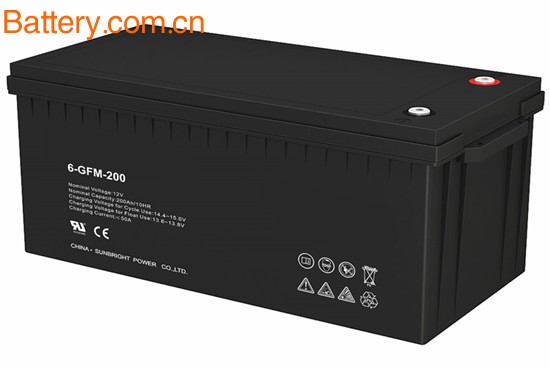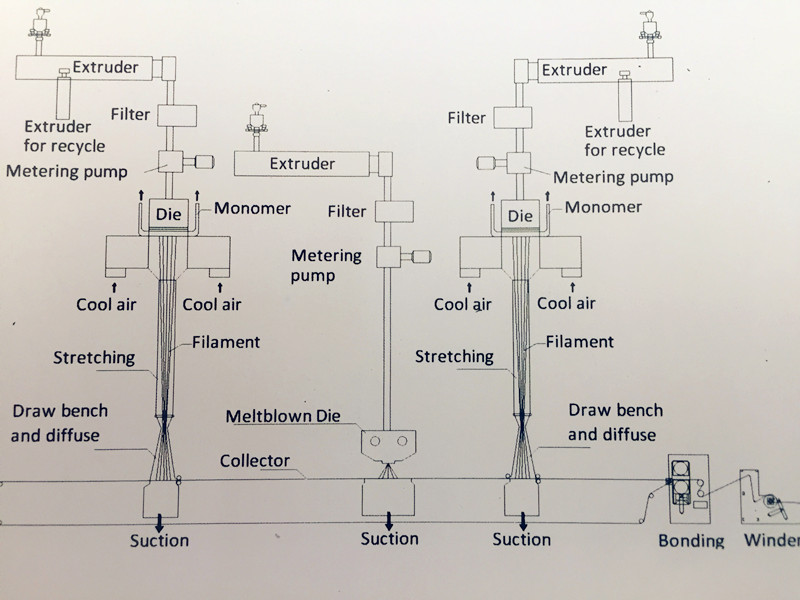Whether the lead-acid battery industry can make a long-term market has the final say!

The emergence of new things does not mean the elimination of old things.
Lead-acid batteries have been in the chemical power source since they were invented by the French company Prand in 1859. This is because of its low price, easy access to raw materials, sufficient safety and reliability in use, high current discharge, wide temperature range, and convenient maintenance.
The data shows that the output of lead-acid batteries in the first three quarters of 2017 was 146 million KVAh, a slight decrease of 21% year-on-year. However, in the industry's view, as the only battery in chemical and physical power sources that can achieve recycling, lead-acid batteries are still the most competitive and indispensable chemical power source. In terms of market share, despite the impetuousness of lithium batteries , lead-acid batteries still account for over 70% of the market share, and the industry influence cannot be underestimated.
However, on the one hand, in 2016, the lead-acid battery industry continued to rise due to the 4% consumption tax and lead price imposed by the state, and the profit margin of the enterprise was further compressed and faced with greater survival pressure;
On the other hand, with the full implementation of the national environmental inspection work in 2017, the lead-acid battery industry is facing more heavy environmental pressure; the “four-wheel low-speed electric vehicle technical conditions†will be released soon, and the lead-acid battery is facing the out market in the low-speed electric vehicle field. Risk; the implementation of the producer responsibility extension system requires lead-acid battery companies to accelerate the establishment of a standardized recycling system...
How to maintain the long-term vitality of lead-acid batteries under the changing policy environment and environmental protection pressure? Competing with lithium-ion batteries in the energy storage, communications, power and vehicle start-stop markets?
The road to differential environmental consumption tax reduction
Since January 1, 2016, the state has officially imposed a consumption tax on lead-acid batteries at a rate of 4%. The industry has responded strongly.
Liu Baosheng, vice chairman of the China Chemical and Physical Power Industry Association, chairman of the Acid Battery Branch, and chairman of the Fengfan Co., Ltd., publicly stated that the consumption tax on lead-acid batteries will be fully competitive, the profit rate will be lower, and the industry will gradually regulate. The lead battery industry brings significant challenges and impacts.
In addition to the impact on industry companies, many people in the industry also said that the "one size fits all" model of consumption tax can not meet the original intention of the government to achieve environmental protection.
On the one hand, the consumption tax is levied according to the corporate tax stamp, and for some “three no†small enterprises and small workshops, because the invoice is not invoiced, the consumption tax cannot be implemented on the head of the illegal enterprise, which undoubtedly makes the formal enterprise on the price. At the competitive disadvantage, the living space of illegal small enterprises has been expanded, and even the phenomenon of “bad money driving out good money†has appeared. On the other hand, the battery manufacturers have different investment in environmental protection, but now this kind of “one size fits all†The tax model does not help improve the level of clean production technology in battery manufacturers.
"Environmental consumption tax policy should be based on green performance as the core breakthrough point, and use differential strategies." Wu Ming, director of the Green Energy Center of the China Environmental Protection Association Environmental Protection Industry Research Institute, pointed out that at this stage, industry enterprises must first change their ideas and ideas from the overall situation of the country. , support and support environmental consumption tax. On this basis, industry enterprises, especially large enterprises, actively participate, and rely on the strength of industry associations and organizations to explore a practical road to environmental consumption tax reduction.
Intelligent manufacturing "three no"
A cruel reality is that the current average net profit margin of the lead-acid battery industry is less than 4%. The elimination of backward productivity, the weak market of consumer products, fierce price competition, and rising comprehensive costs are also pushing battery companies to invest more resources to accelerate the intelligent manufacturing of the battery industry through technological innovation, production automation and management standardization.
Dong Jie, Vice President of Leoch International Technology Co., Ltd. believes that the increasing demand for customers, the transformation of traditional manufacturing business models, the promotion of a new generation of process technologies and the demand for national strategies have forced battery companies to make business changes and upgrades. It is not limited to the manufacturing process, but requires the re-engineering of the entire system.
For the development direction of intelligent manufacturing in the battery industry, Jiangsu Xiante Energy Equipment Co., Ltd., which specializes in producing various battery-specific equipment, has the most say. According to Chen Yingming, the general manager of the company, the intelligent manufacturing transformation is a strategic decision of the battery company, and at the same time it is a revolution of the enterprise. Different industries and enterprises do not have a completely common implementation plan, and must proceed from the enterprise itself to do a good overall plan.
"Domestic battery production equipment has made great progress in process technology realization and product precision. The price of domestic equipment has also increased from 20% and 30% of the original imported equipment to about 70%. The existing assembly line equipment includes automobiles. The assembly line and the large assembly line have been upgraded automatically, and the data port has been reserved for the subsequent intelligent transformation. The company has invested heavily in intelligentization, and it is expected to reach the initial intelligent manufacturing in the next 5-8 years." Said.
"Do not rush behind in the process of automation; do not engage in informationization in the backward management; do not engage in intelligence when not digital and networked." Dong Jie's "three do not" view on the development of intelligent manufacturing is also worthy of the industry. Think deeply.
Advanced lead carbon battery has broad prospects
Environmental issues will be a key factor affecting the future lead-acid battery market, especially reducing vehicle emissions and improving fuel efficiency, which will lead to changes in the automotive lead-acid battery market. New automotive technologies, including "start-stop" technology, will drive VRLA batteries, AGM batteries and potential lead-carbon batteries for automotive applications.
The person in charge of the camel battery said that the company is accelerating the technological transformation of AGM and EFB batteries with better performance and lower cost; and making long-term plans to develop next-generation battery products to meet higher energy recovery and auxiliary power. Claim.
At the "2017 China International Lead-Acid Battery Summit Forum" held recently, Dr. Jingjing Wang, a researcher at the Dalian Institute of Chemical Physics of the Chinese Academy of Sciences, gave a detailed introduction on the development of advanced lead carbon battery industrialization technology. He believes that lead-carbon batteries can meet the requirements of partial state of charge, and have broad market prospects in energy storage and electric vehicle applications; their charge acceptance is much higher than that of lead-acid batteries, which can meet the needs of rapid charge and discharge; Excellent performance in terms of life, can reach several times of lead-acid batteries; and can develop lead carbon batteries with special properties, such as low-temperature lead-carbon batteries, according to different application fields. At present, advanced lead carbon batteries are also an important research and development direction for many enterprises.
Resource and environmental responsibility throughout the life cycle
In December 2016, the General Office of the State Council issued the “Implementation Plan for the Extended Producer Responsibility Systemâ€, which included the lead-acid battery as one of the first four products to implement the producer responsibility extension system. The core of the producer responsibility extension system refers to the system that extends the resource and environmental responsibility of the producer from its production link to the whole life cycle of product design, circulation consumption, recycling and waste disposal.
According to He Yi, senior engineer of the Solid Waste Center of the Ministry of Environmental Protection, the following points are worthy of attention through the pilot of the collection and transfer management system for waste lead-acid batteries: First, we must vigorously support the construction of the formal system. The collection facilities are divided into collection stations and temporary storage points, and a multi-level collaborative closed-circuit circulation system of “network collection, centralized operation and professional regeneration†is constructed. Second, it is necessary to resolutely crack down on illegal lead regeneration activities and gradually incorporate individual collectors into formality. The lead-acid battery recycling industry is a labor-intensive industry and requires a large amount of labor. Moreover, the situation of domestic individual collection is difficult to change in the short term, so it can be trained to be included in the formal recycling system. Third, it is necessary to give full play to the industry autonomy and promote efficient cooperation. These include lead-acid battery manufacturers, recycled lead companies, professional recycling companies and related industry associations; the fourth is to strengthen the information monitoring of the entire process. The biggest problem facing waste lead-acid batteries is the illegal loss and intermediate process dumping of lead-containing acid. Through the application of Internet of Things and big data, it can effectively improve the management of enterprise production chain and scientifically prevent environmental risks.
Battery China Network believes that market acceptance is an important criterion for testing product vitality. In the case of lead-acid batteries, it is the lead-acid battery industry to meet the challenges of actively promoting industrial technological advancement, accelerating the implementation of industrial automation and intelligent manufacturing, implementing the producer responsibility extension system, and recycling and recycling of used lead-acid batteries. Important initiatives. Of course, from the perspective of national policy, the encouragement is also encouraged, and the support has to be supported.
SMS Composite Nonwoven Line Series
SMS composite nonwoven lines distribute polypropylene (PP) by two spunbond dies and one meltblown die, which produces a kind of composite nonwoven fabric. The product of meltblown die is in the middle and the product of two spunbond dies is on the top and at the bottom. SMS nonwoven machine compounds those three products together, producing the tighter and stronger nonwoven fabric. The product of SMS nonwoven machine is more suitable for surgical gowns, protective clothes, disposable sanitary cloth and so on.

Main Parameters of SMS Composite Non-woven Line:
|
Quantity of Die |
Spunbond Unit: 2 sets Meltblown Unit: 1 set |
|
Effective Width <mm> |
1600 |
|
2400 |
|
|
3200 |
|
|
GSM<g/㎡> |
12-100 |
|
Embossing Pattern |
Diamond |
|
Oval |
|
|
*Customizable |
If you have any question about the nonwoven production line, please contact us directly. We will reply you as soon as possible. We are willing to take you to visit the factory.
SMS Nonwoven Fabric Making Machine,SMS Composite Nonwoven Line, SMS Composite Nonwoven Machine, SMS Nonwoven Machine
Yangzhou Yuyang Nonwoven Machinery Co., Ltd , https://www.yy-machinery.com